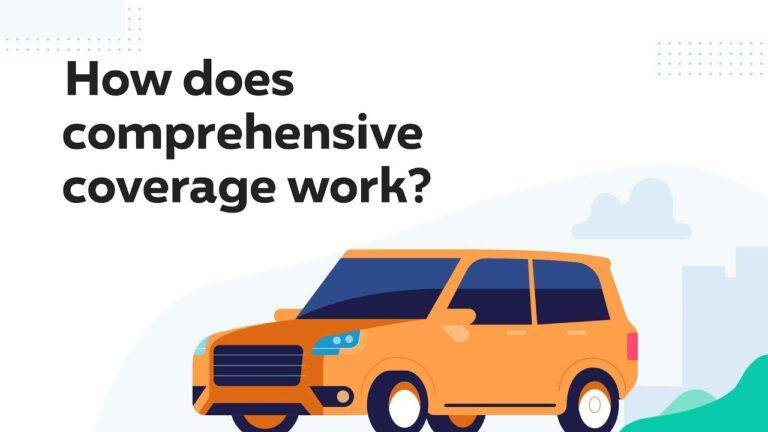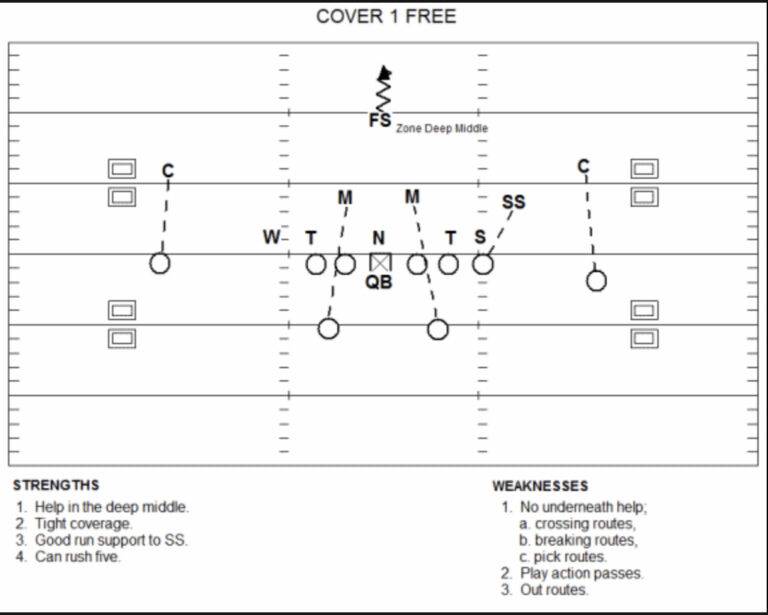Table of Contents
Collision Coverage:
What it covers: Collision coverage protects your vehicle from damage resulting from a collision with another vehicle or object unlike Car Insurance. This includes scenarios like:
- Accidents with other cars
- Hitting a stationary object like a tree or fence
- Rolling your vehicle
- When it applies: Collision coverage comes into play regardless of who is at fault in the accident. It ensures you have financial protection for repairs or replacement of your vehicle even if you caused the collision.
Comprehensive Coverage:
What it covers: Comprehensive coverage protects your vehicle from damage caused by events other than collisions. This includes a wide range of incidents such as:
- Theft or vandalism
- Fire
- Natural disasters (e.g., floods, hurricanes, earthquakes)
- Falling objects (e.g., tree branches, hail)
- Animal collisions
- When it applies: Comprehensive coverage is typically optional, except when required by a lender for financed vehicles. It provides broader protection against unforeseen events beyond your control.
- Key Differences:
Cause of Damage: Collision coverage focuses on damage from collisions, while comprehensive coverage encompasses damage from non-collision events.
Fault Determination: Collision coverage applies regardless of fault, whereas comprehensive coverage is relevant regardless of who or what caused the damage.
Optional vs. Mandatory: Collision coverage is often optional, while comprehensive coverage may be required by lenders for financed vehicles.
Choosing the Right Coverage:
The decision to purchase collision and/or comprehensive coverage depends on several factors:
Value of your vehicle: If you have a newer or more expensive car, the potential repair or replacement costs are higher, making both collision and comprehensive coverage more valuable.
Financial situation: Consider your ability to cover repair costs out of pocket. If you have limited financial resources, having both types of coverage can provide greater peace of mind.
Driving environment: If you live in an area prone to theft, vandalism, or severe weather events, comprehensive coverage becomes more important.
Loan or lease requirements: If you are financing or leasing your vehicle, the lender may require both collision and comprehensive coverage.
Beyond Collision & Comprehensive: Additional Car Insurance Options
While collision and comprehensive coverage are essential components of car insurance, several other types of coverage offer additional protection and peace of mind. Here are some options to consider:
- Uninsured/Underinsured Motorist Coverage (UM/UIM):
Protection against uninsured drivers: This coverage protects you if you’re involved in an accident with a driver who doesn’t have car insurance or has insufficient coverage to pay for your damages.
Coverage for hit-and-run accidents: UM/UIM also applies in hit-and-run situations where the at-fault driver cannot be identified.
- Personal Injury Protection (PIP):
Medical expense coverage: PIP covers medical expenses for you and your passengers, regardless of who is at fault in an accident. This includes expenses like hospital bills, ambulance fees, and rehabilitation costs.
Lost wages and other benefits: PIP can also provide coverage for lost wages, funeral expenses, and essential services like childcare or household help if you’re unable to perform these tasks due to injuries sustained in an accident.
- Medical Payments (MedPay):
Medical expense coverage: Similar to PIP, MedPay covers medical expenses for you and your passengers resulting from a car accident.
Flexibility: MedPay typically offers lower coverage limits than PIP but can be a more affordable option for those seeking basic medical expense protection.
- Gap Insurance:
Protection for financed vehicles: If your car is totaled or stolen, gap insurance covers the difference between the actual cash value of your vehicle and the amount you still owe on your loan or lease.
Financial security: Gap insurance can prevent you from being left with a significant financial burden if your car is totaled early in the loan or lease term.
- Rental Reimbursement Coverage:
Coverage for rental car expenses: This coverage helps pay for the cost of a rental car while your vehicle is being repaired after a covered accident.
Convenience and peace of mind: Rental reimbursement coverage ensures you have transportation while your car is unavailable, minimizing disruption to your daily life.
- Roadside Assistance Coverage:
Help in case of breakdowns: Roadside assistance provides services such as towing, jump-starts, tire changes, lockout assistance, and fuel delivery if your car breaks down.
24/7 support: This coverage offers peace of mind knowing you have access to help whenever and wherever you need it on the road.
Choosing Additional Coverage:
Consider your individual needs, budget, and risk tolerance when deciding on additional car insurance coverage. Evaluate the potential benefits and costs of each option to determine which ones provide the most value for your specific situation.
Collision and Comprehensive Coverage: Factors and Considerations
The cost of collision and comprehensive car insurance varies depending on several factors, making it difficult to pinpoint exact figures. However, understanding the key influences can help you estimate potential costs and make informed decisions about your coverage.
Factors Influencing Costs:
Vehicle Value: The value of your car plays a significant role. Newer or more expensive vehicles generally have higher repair or replacement costs, leading to higher premiums for both collision and comprehensive coverage.
Deductible Amount: Choosing a higher deductible lowers your premium but increases your out-of-pocket expenses in case of a claim. Conversely, a lower deductible provides more financial protection but comes with higher premiums.
Driving Record: A clean driving record with no at-fault accidents or traffic violations typically results in lower insurance costs.
Location: Insurance premiums can vary based on your location due to factors like traffic density, crime rates, and weather-related risks. Urban areas with higher accident rates or regions prone to theft or natural disasters often have higher premiums.
Age and Gender: Younger drivers and statistically higher-risk groups may face higher premiums.
Credit History: In some states, insurance companies consider credit scores when determining premiums. A good credit score can lead to lower rates.
Coverage Limits: Choosing higher coverage limits for repairs or replacement increases your premium.
Typical Cost Range:
While specific costs vary widely, here’s a general range to consider:
- Collision Coverage: Premiums can range from a few hundred dollars to over a thousand dollars per year, depending on the factors mentioned above.
- Comprehensive Coverage: Costs are typically lower than collision coverage, often ranging from a hundred to several hundred dollars annually.
- Cost-Saving Tips:
- Shop around and compare quotes: Obtain quotes from multiple insurance companies to find the best rates and coverage options.
- Choose a higher deductible: Opting for a higher deductible lowers your premium but be prepared to pay more out of pocket if you file a claim.
- Maintain a good driving record: Avoiding accidents and traffic violations demonstrates responsible driving behavior and can lead to lower premiums.
- Inquire about discounts: Ask your insurance company about available discounts, such as those for good students, safe drivers, or having safety features in your vehicle.
- Bundle your insurance policies: Combining car insurance with other policies like homeowners or renters insurance can often result in discounts.
Collision and Comprehensive Coverage: Requirements and Limitations
While collision and comprehensive car insurance offer valuable protection for your vehicle, it’s essential to understand any specific requirements or limitations that may apply. Here are some key points to consider:
Requirements:
Deductible: Both collision and comprehensive coverage typically come with a deductible, which is the amount you agree to pay out of pocket before your insurance coverage kicks in. You can choose the deductible amount, with higher deductibles generally leading to lower premiums.
Vehicle Condition: Insurance companies may have requirements regarding the age and condition of your vehicle for collision and comprehensive coverage. For older or high-mileage cars, they might require inspections or limit coverage options.
Loan or Lease Agreements: If you are financing or leasing your vehicle, the lender may require you to carry both collision and comprehensive coverage to protect their financial interest in the car.
Limitations:
- Coverage Limits: Both collision and comprehensive coverage have coverage limits, which represent the maximum amount the insurance company will pay for a covered claim. It’s important to choose coverage limits that adequately protect the value of your vehicle.
- Exclusions: Certain events or types of damage may be excluded from collision and comprehensive coverage. Common exclusions include:
- Wear and tear
- Mechanical breakdowns
- Damage caused by intentional acts or racing
- Damage from using your vehicle for business purposes (e.g., ridesharing)
- Damage caused by war or terrorism
- Market Value vs. Replacement Cost: In case of a total loss, insurance companies typically pay the actual cash value (market value) of your vehicle, not the replacement cost. However, some insurers offer optional replacement cost coverage for an additional premium.
- Additional Considerations:
- Aftermarket Modifications: If you have added aftermarket parts or modifications to your vehicle, ensure they are covered under your collision and comprehensive policy. You may need additional coverage or endorsements to protect these modifications.
- Usage-Based Insurance: Some insurance companies offer usage-based insurance programs that track your driving habits and adjust premiums accordingly. These programs may impact the cost of your collision and comprehensive coverage based on your driving behavior.
Usage-Based Insurance Programs: A Growing Trend
Major Car Insurance Companies with UBI Programs (as of November 2023):
- Progressive: Snapshot program
- State Farm: Drive Safe & Save program
- Allstate: Drivewise program
- Nationwide: SmartRide program
- Liberty Mutual: RightTrack program
- Travelers: IntelliDrive program
- USAA: SafePilot program
- American Family Insurance: KnowYourDrive program
- Farmers Insurance: Signal program
Let’s delve deeper into some of the prominent usage-based insurance (UBI) programs offered by major car insurance companies:
- Progressive Snapshot: A pioneer in UBI, Progressive’s Snapshot program uses a mobile app or plug-in device to track driving habits like hard braking, rapid acceleration, and mileage. Safe drivers can earn significant discounts on their car insurance premiums.
- State Farm Drive Safe & Save: This program offers flexibility with both mobile app and device options to monitor driving behavior. Discounts are based on factors like mileage, acceleration, braking, and cornering. State Farm also provides a discount just for enrolling in the program.
- Allstate Drivewise: Using a mobile app, Allstate Drivewise tracks driving habits and provides feedback to help drivers improve their skills. The program offers rewards and discounts based on safe driving behaviors.
- Nationwide SmartRide: SmartRide utilizes a mobile app to monitor driving habits and offers potential discounts based on factors like mileage, hard braking, and nighttime driving. Participants receive an initial discount just for enrolling.
- Liberty Mutual RightTrack: This program offers both plug-in device and mobile app options to track driving habits. RightTrack focuses on factors like mileage, acceleration, braking, and nighttime driving to determine potential discounts.
- Travelers IntelliDrive: Using a mobile app, IntelliDrive monitors driving behaviors and provides feedback to help drivers improve. The program offers potential discounts based on safe driving habits.
- USAA SafePilot: Designed for USAA members, SafePilot uses a mobile app to track driving behaviors like speeding, hard braking, and phone usage while driving. Safe drivers can earn significant discounts on their car insurance premiums.
- American Family Insurance KnowYourDrive: This program utilizes a mobile app to monitor driving habits and provides feedback to encourage safer driving. KnowYourDrive offers potential discounts based on factors like smooth driving, speed, and time of day.
- Farmers Insurance Signal: Signal offers both mobile app and device options to track driving behaviors. The program focuses on factors like mileage, braking, and speed to determine potential discounts for safe drivers.
- Choosing the Right UBI Program:
- When considering a UBI program, it’s crucial to:
- Compare Discount Potential: Research the potential discounts offered by different programs and compare them to your current premiums.
Evaluate Data Collection Practices: Understand what data is collected, how it’s used, and the privacy implications.
Consider Technology Requirements: Determine if you’re comfortable with using a mobile app or installing a device in your vehicle.
Assess Your Driving Habits: Be honest about your driving behavior and whether a UBI program could potentially benefit or penalize you. - Types of UBI Programs:
- Pay-As-You-Drive (PAYD): Premiums are based on the number of miles driven.
Pay-How-You-Drive (PHYD): Premiums are based on driving behaviors such as speed, acceleration, braking, and time of day.
Telematics-Based: Uses devices or mobile apps to collect driving data.
Benefits of UBI Programs: - Potential for Lower Premiums: Safe drivers may be rewarded with lower insurance costs.
Increased Awareness of Driving Habits: Provides feedback on driving behavior, encouraging safer practices.
Personalized Insurance: Tailors premiums to individual driving patterns.
Considerations for UBI Programs: - Privacy Concerns: Data collection and usage may raise privacy concerns for some individuals.
Technology Requirements: May require installing devices or using mobile apps.
Driving Behavior Impact: Premiums could increase for drivers with risky habits.





